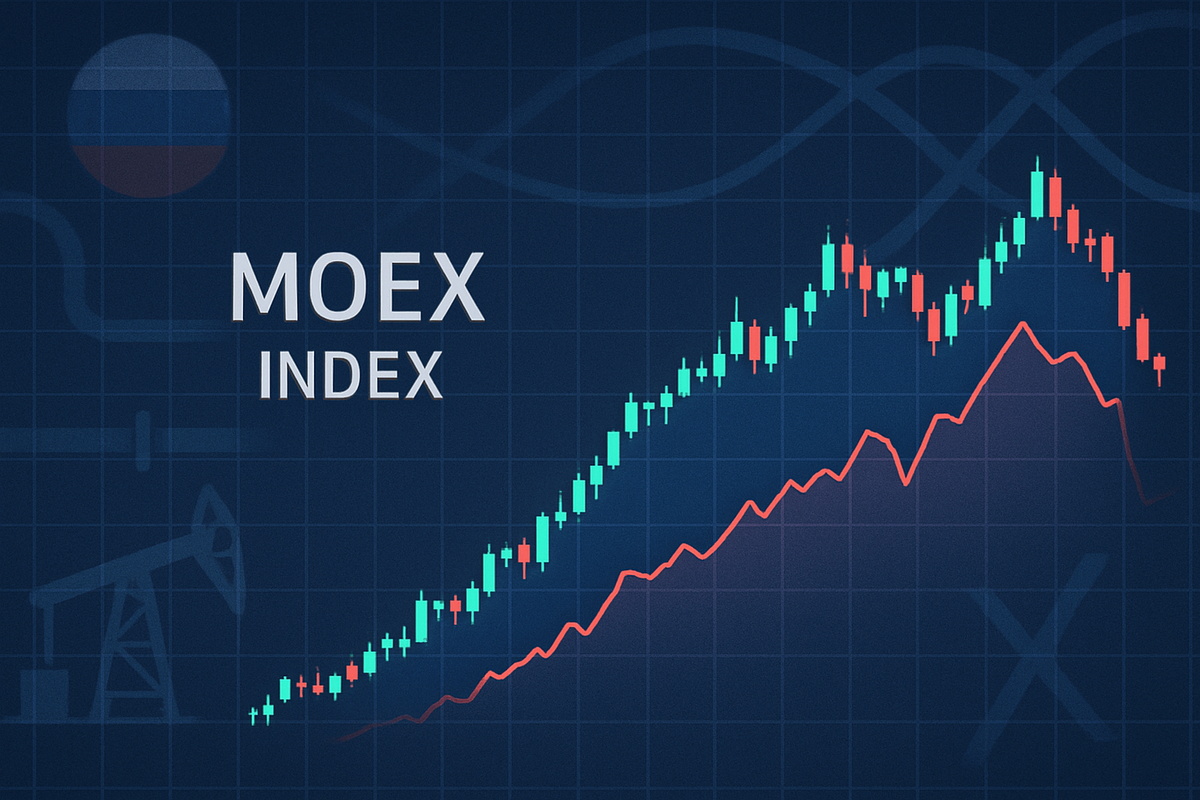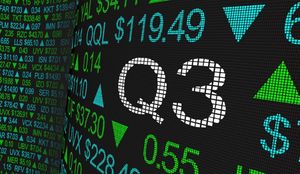
As the trading day concluded on October 7, 2025, at 17:59 MSK, the MOEX Russia Index (IMOEX) registered at 2659 points, marking a modest 0.40% gain from the previous session. This slight uptick, however, belies a more challenging period for the Russian stock market, which has seen an 8.99% decline over the past month and is down 4.64% year-on-year. The market's performance continues to be a complex tapestry woven from persistent geopolitical tensions, fluctuating global commodity prices, and the Kremlin's assertive economic policies.
The current state of the MOEX Index reflects a market grappling with sustained external pressures and internal economic adjustments. While some sectors demonstrate resilience, the overall sentiment remains cautious, heavily influenced by the ongoing conflict in Ukraine and the comprehensive international sanctions levied against Russia. Investors are closely monitoring any signals regarding de-escalation or potential shifts in global political alignments, which have historically triggered significant market movements.
A Market Under Pressure: Geopolitical Tensions and Economic Realities
The performance of the MOEX Index on October 7, 2025, at 2659 points, is a direct consequence of a confluence of significant geopolitical and economic factors that have shaped the Russian financial landscape throughout late 2024 and early 2025. Geopolitical tensions, primarily stemming from the Ukraine conflict, remain the foremost determinant of market sentiment. Western sanctions continue to constrain foreign investment and access to global capital markets, creating a challenging environment for Russian companies. Hopes for sanctions relief, as briefly glimpsed in early March 2025 with reports of a potential U.S. plan, have consistently led to market rallies, underscoring the market's acute sensitivity to any signs of de-escalation.
Economically, the Russian market is heavily dependent on global commodity prices, particularly oil and gas. While Russian President Vladimir Putin warned in early October 2025 of oil prices potentially exceeding $100 per barrel without Russian crude, the market has also contended with periods of lower oil prices, forcing the government to revise its 2025 budget parameters. The Central Bank of Russia (CBR) has been actively managing monetary policy, cutting the key interest rate to 17% on September 12, 2025, down from 21% in October 2024, in an effort to stimulate economic activity. However, persistent inflation, which reached 8.76% in late 2024 and is expected to be 6-7% by year-end 2025, continues to pose a challenge, further exacerbated by proposed tax increases, including a VAT hike to 22% starting in 2025. This inflationary pressure, coupled with a widening budget deficit—forecast at 5.74 trillion rubles (2.6% of GDP) in October 2025 due to record military spending—creates a complex and often volatile operating environment for businesses and investors alike. Internally, Russia's political stability under President Putin's renewed term, alongside a significant increase in domestic retail investor participation, has provided some counterweight to external pressures, yet the structural shift towards a wartime economy introduces long-term uncertainties.
Navigating the Currents: Winners and Losers in the Russian Market
In this intricate market landscape, certain Russian public companies and sectors are experiencing varying degrees of impact. The energy sector, the backbone of the Russian economy, remains highly sensitive to global oil and gas prices and export policies. Gazprom (MCX: GAZP), a key player, reported a significant net profit of 1.2 trillion rubles ($15 billion) in 2024, a notable recovery from a loss in 2023, largely attributed to its oil arm, Gazprom Neft. As of October 1, 2025, Gazprom shares were trading around 116.15 rubles. However, other energy giants like Rosneft (MCX: ROSN) and Lukoil (MCX: LKOH) have faced considerable headwinds, with Rosneft plunging nearly 30% year-to-date and Lukoil down close to 12% as of June 2025, reflecting the volatility in oil prices and the ongoing impact of sanctions on their international operations and access to technology.
Conversely, the financial sector, particularly dominant players like Sberbank (MCX: SBER), has shown remarkable resilience. Sberbank reported high revenue and net profit in 2025, driven by robust commission income growth, effective cost management, and extensive digital platform utilization. Its shares were around 285.75 rubles on October 1, 2025. This performance highlights the bank's ability to adapt to the high-interest-rate environment and leverage its strong domestic market position. Companies aligned with the domestic market and those benefiting from increased government spending on defense and infrastructure are likely to find a more favorable operating environment. However, businesses reliant on imported components, foreign technology, or international markets continue to face significant challenges.
Broader Implications: Reshaping Russia's Economic Future
The current state of the Russian stock market on October 7, 2025, is not an isolated event but rather a reflection of broader, long-term trends reshaping Russia's economic trajectory. The persistent sanctions regime has accelerated Russia's pivot towards self-sufficiency and new economic partnerships, particularly with Asian and Middle Eastern nations. This reorientation is creating structural shifts in trade flows, supply chains, and investment patterns, moving away from traditional Western ties. The increasing role of domestic retail investors, with over five million new brokerage accounts opened in 2024, filling some of the void left by departing foreign capital, signals a growing internal financial ecosystem, albeit one that is highly reactive to geopolitical news.
Regulatory and policy implications are profound. The Russian government's aggressive fiscal policy, marked by record military spending and corresponding tax hikes (including the proposed VAT increase and higher corporate rates), is fundamentally altering the distribution of economic resources. This wartime footing, coupled with the state's expanding control over strategically important companies, poses long-term questions about the role of private enterprise and the overall investment climate. Historically, periods of intense geopolitical isolation and commodity price volatility have led to significant restructuring within the Russian economy. This current period draws parallels, suggesting a future where state intervention and domestic market dynamics will play an even more dominant role, potentially impacting innovation, competitiveness, and long-term growth prospects across various sectors.
The Path Ahead: Scenarios and Strategic Adaptations
Looking ahead, the Russian stock market is poised for continued volatility, heavily influenced by both internal and external developments. In the short term, market movements will remain acutely sensitive to any news regarding the Ukraine conflict, the imposition or easing of sanctions, and global commodity price fluctuations. The CBR's future monetary policy decisions, particularly regarding further interest rate adjustments in response to inflation, will also play a critical role in shaping investor sentiment and corporate profitability.
Long-term possibilities include further economic restructuring, with an increased focus on import substitution and diversification away from Western technologies and markets. Russian companies are likely to continue adapting their strategies, prioritizing domestic market opportunities, exploring new export routes, and investing in localized production capabilities. While this presents challenges in terms of efficiency and access to advanced technologies, it could also foster the development of new domestic industries. Potential scenarios range from a continued period of geopolitical isolation and economic self-reliance, which would keep the MOEX under pressure, to a hypothetical de-escalation of tensions leading to a significant rebound as foreign capital cautiously re-enters the market. Emerging market opportunities may arise in sectors that are critical for national security, import substitution, or those that can leverage new trade partnerships. However, investors must weigh these against the ongoing challenges of a high-interest-rate environment, inflationary pressures, and the overarching geopolitical risks.
Concluding Thoughts: A Market Defined by Uncertainty
The Russian stock market, as observed on October 7, 2025, at 17:59 MSK, stands at a critical juncture. The MOEX Index, despite a daily gain, reflects a market deeply entrenched in a period of significant geopolitical and economic transformation. Key takeaways include the market's profound sensitivity to external political developments, the enduring influence of commodity prices, and the government's assertive fiscal and monetary policies aimed at sustaining a wartime economy.
Moving forward, the market is likely to remain complex and challenging. Investors should closely monitor geopolitical developments, particularly any shifts in the Ukraine conflict or sanctions regime, as these will be primary drivers of market direction. Global oil and gas prices, the Central Bank of Russia's interest rate decisions, and the government's evolving fiscal policies, including tax reforms and budget allocations, will also be crucial indicators. The resilience shown by some sectors, particularly large domestic players like Sberbank, highlights areas of potential stability, but the overall landscape suggests that the Russian market will continue to be defined by a high degree of uncertainty and a unique interplay of internal and external forces for the foreseeable future.
This content is intended for informational purposes only and is not financial advice





